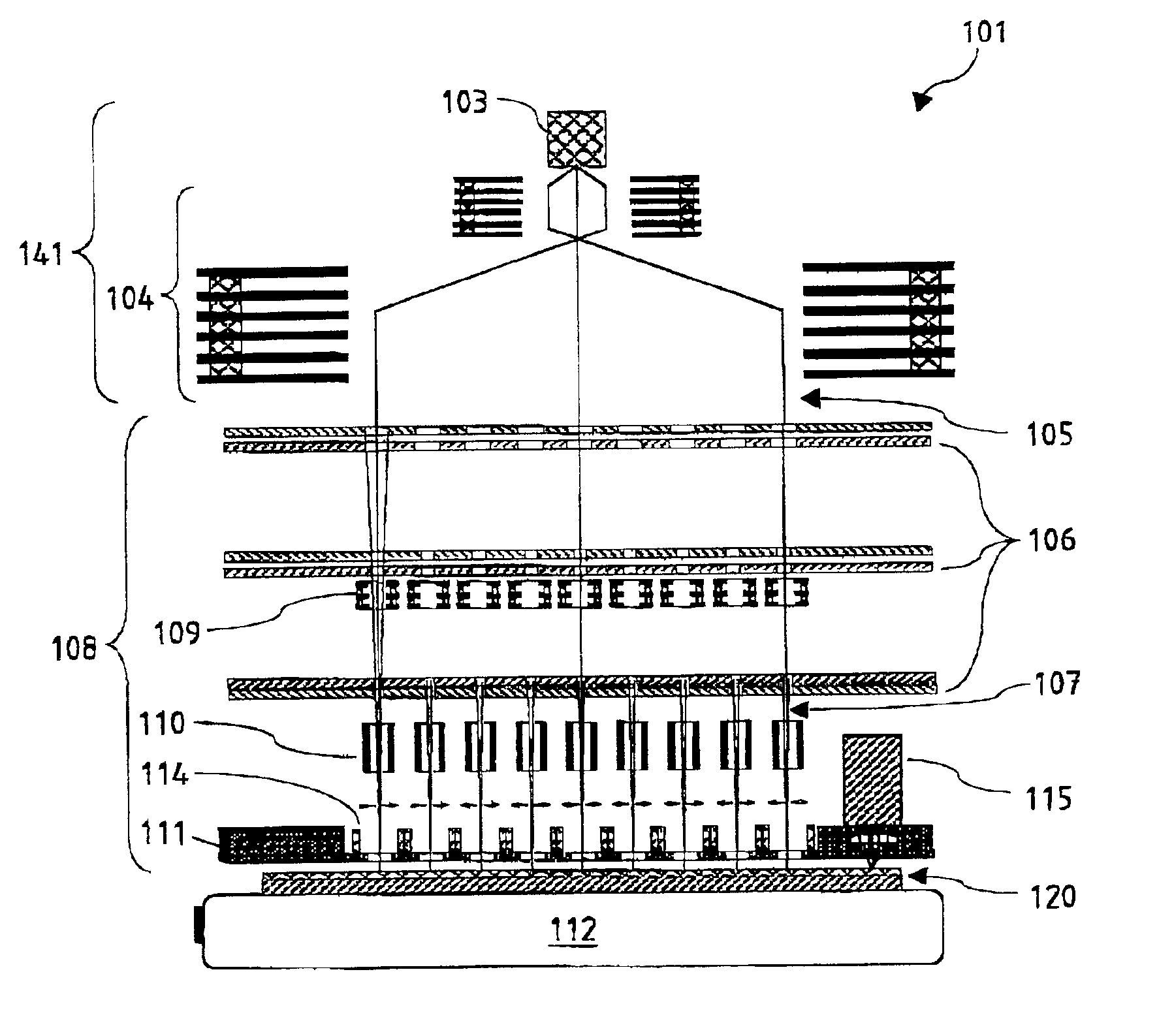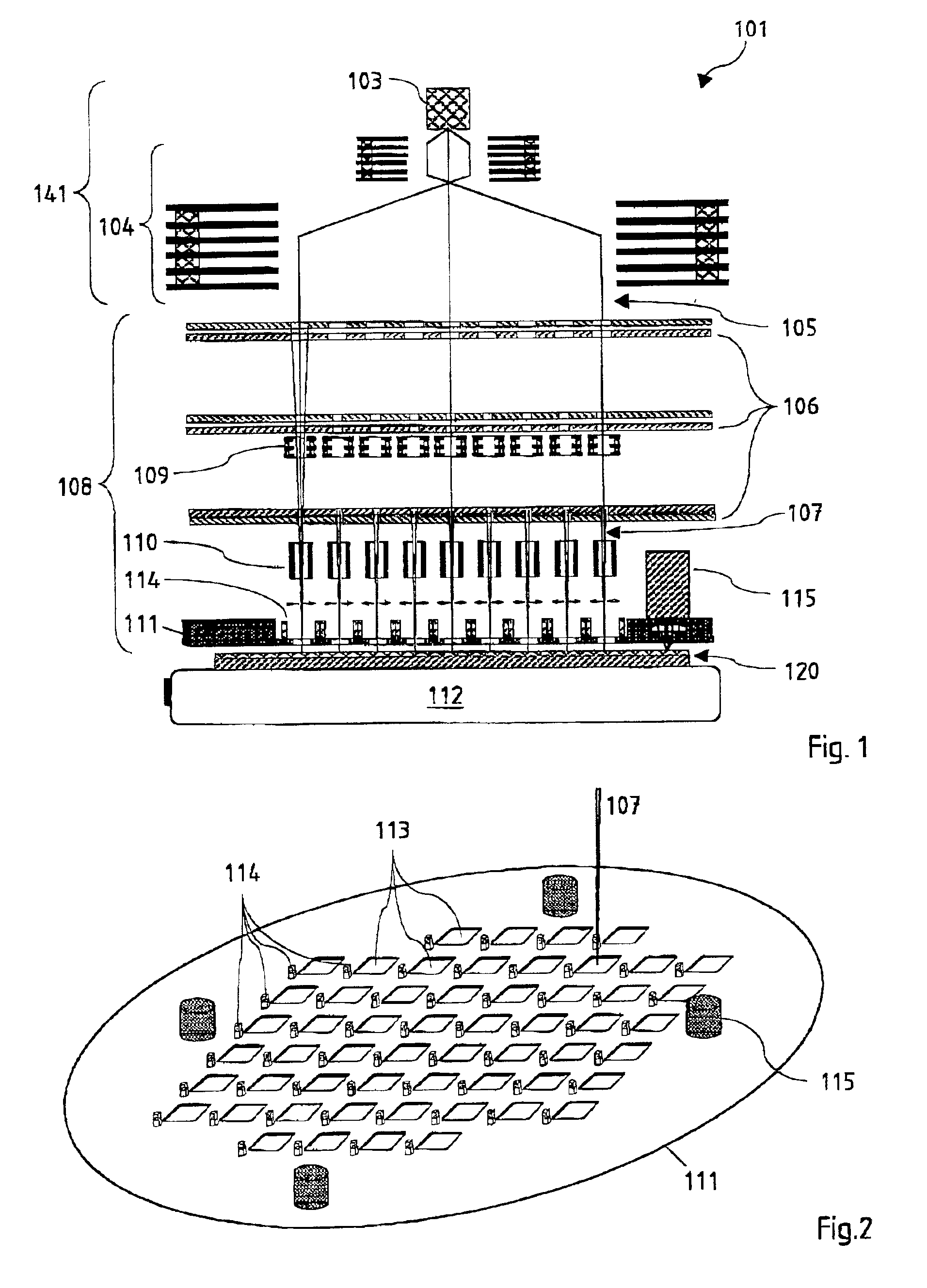Particle multibeam lithography
- Summary
- Abstract
- Description
- Claims
- Application Information
AI Technical Summary
Benefits of technology
Problems solved by technology
Method used
Image
Examples
Embodiment Construction
[0038]As a first preferred embodiment of the invention, an exemplary ion multibeam lithography system 101 is shown in the schematic longitudinal section of FIG. 1. This lithography system is arranged for writing of structures onto a resist-covered wafer substrate 120. The first part of the system, the illumination system 141, comprises an ion source 103 and a collimator optics system 104 and serves to produce a broad ion beam 105. The total width of the illuminating beam 105 produced by the illumination system 121 is at least a wafer diameter, e.g., 300 mm. A collimator optics system for producing a particle beam of this kind is disclosed by G. Stengl et al. in the U.S. Pat. No. 5,742,062. The beam 105 is substantially homogeneous over its width so as to have a particle flow sufficiently uniform within the allowed tolerances for all individual beams which are produced from the illuminating beam.
[0039]The illuminating beam 105 emerging from the illuminating system 141, is telecentric...
PUM
 Login to View More
Login to View More Abstract
Description
Claims
Application Information
 Login to View More
Login to View More - R&D
- Intellectual Property
- Life Sciences
- Materials
- Tech Scout
- Unparalleled Data Quality
- Higher Quality Content
- 60% Fewer Hallucinations
Browse by: Latest US Patents, China's latest patents, Technical Efficacy Thesaurus, Application Domain, Technology Topic, Popular Technical Reports.
© 2025 PatSnap. All rights reserved.Legal|Privacy policy|Modern Slavery Act Transparency Statement|Sitemap|About US| Contact US: help@patsnap.com



